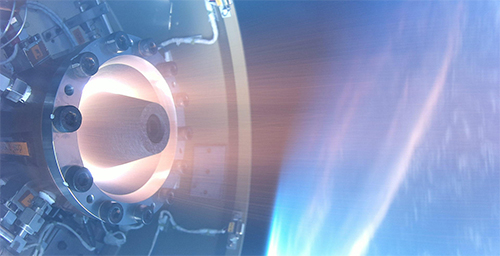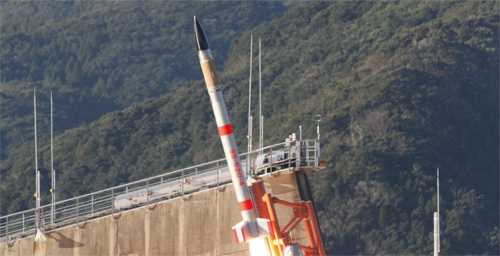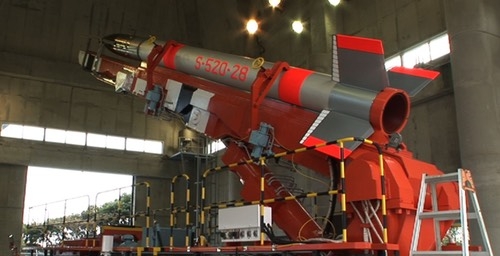Solid particles containing iron (dust particles) act to promote the formation of molecules in interstellar space, and are key to understanding physical and chemical processes there.
Iron contained in dust particles comes in various forms such as metallic iron and iron oxide, each with different properties. Previous studies have suggested that iron is present mainly in forms other than iron oxide, iron carbide, and iron sulfide. To verify the possibility that metallic iron is present, a research team led by Dr. Kimura (Hokkaido University) performed in situ observations of gaseous iron cooling in a microgravity environment, and investigated the ease of iron aggregation (the efficiency at which metallic iron forms).
The experimental results showed that, unlike in the results of ground experiments, it was difficult for iron atoms to aggregate. In other words, it is difficult for metallic iron to form in outer space.
The team speculates that iron in dust particles is not a metal, but rather contained as a compound, or adhered to other particles as an impurity.
The results of this research were published in the online journal Science Advances of the American Association for the Advancement of Science on 21 January 2017.
There are very few dust particles in interstellar space. Even so, they are components in the formation of stars and planetary systems, and play an important role in the physical and chemical processes there, such as promoting to form molecules.
Dust particles are smaller than 1 micrometer in size and are composed of various elements. Those containing iron are thought to act as catalysts that promote formation of molecules in interstellar space.
The iron in dust particles has metallic iron, iron oxide, iron sulfide, and iron carbide forms, each with different properties. In other words, understanding the state of iron in dust particles is a key to understanding physical and chemical processes such as the formation of molecules in interstellar space and the formation of dust particles with bound molecules.
Previous studies based on observations of objects in the Galactic disk have suggested that, considering that iron in dust particles is present as iron oxide, iron carbide, and iron sulfide, there seems to be an insufficient amount of iron that should be present in interstellar space in the Galactic disk.
The research team conducted an experiment in which iron gas was solidified in a microgravity environment to verify the possibility that metallic iron is present in interstellar space.
Iron nuclei are generated by nuclear fusion reactions inside stars. When the star dies, those nuclei are scattered into interstellar space along with other diverse elements.
The research team performed experiments focusing on the process by which iron changes from a gas to a solid. These experiments were conducted under microgravity (approximately 1/10,000th of Earth's gravity) obtained using a sounding rocket for about 8 minutes. In an experimental apparatus filled with argon, iron gas was generated at a temperature of about 2230 K and the cooling process was observed in situ.
Figure: Dual-wavelength Mach-Zehnder interferometric image of a reproduction experiment of iron particles carried out in a microgravity environment aboard an S-520-28 sounding rocket. Panel (a) shows the original image observed in situ, while (b) and (c) respectively show laser interference fringes divided into green and red by image processing. Because the refractive index dependence of the interference fringe change varies with wavelength, the temperature and concentration can be obtained simultaneously from (b) and (c). The scale bar is 2 mm. Images © Hokkaido University / JAXA
The acquired data gave the temperature and concentration of nucleation*, and provided estimates of the aggregation rate of iron atoms from the cooling rate of iron gas and other factors. The analysis results showed a very small aggregation rate, 0.002% or less. Previous ground-based experiments had estimated very different aggregation rates, from 1% to 100%.
The results of this experiment showed that it is hard for iron atoms to aggregate in interstellar space, so it is difficult for metallic iron to form. We can thus speculate that the iron in dust particles is not present as a metal, but rather present as a compound or adhered to other particles as impurities.
When a star dies, it releases into interstellar space not only iron but also various other elements. If we consider condition of the Galactic disk, various types of molecules and dust are also distributed around the dead star. A variety of molecular and chemical processes may be involved in the process by which the iron formed in a star cools, solidifies, and becomes incorporated into dust particles.
*Nucleation: A phenomenon that triggers a change in a substance's state. In highly localized regions, thermodynamically different phases appear. This research demonstrated a phenomenon that triggers a change from gas to solid in gaseous condensation and solidification.





